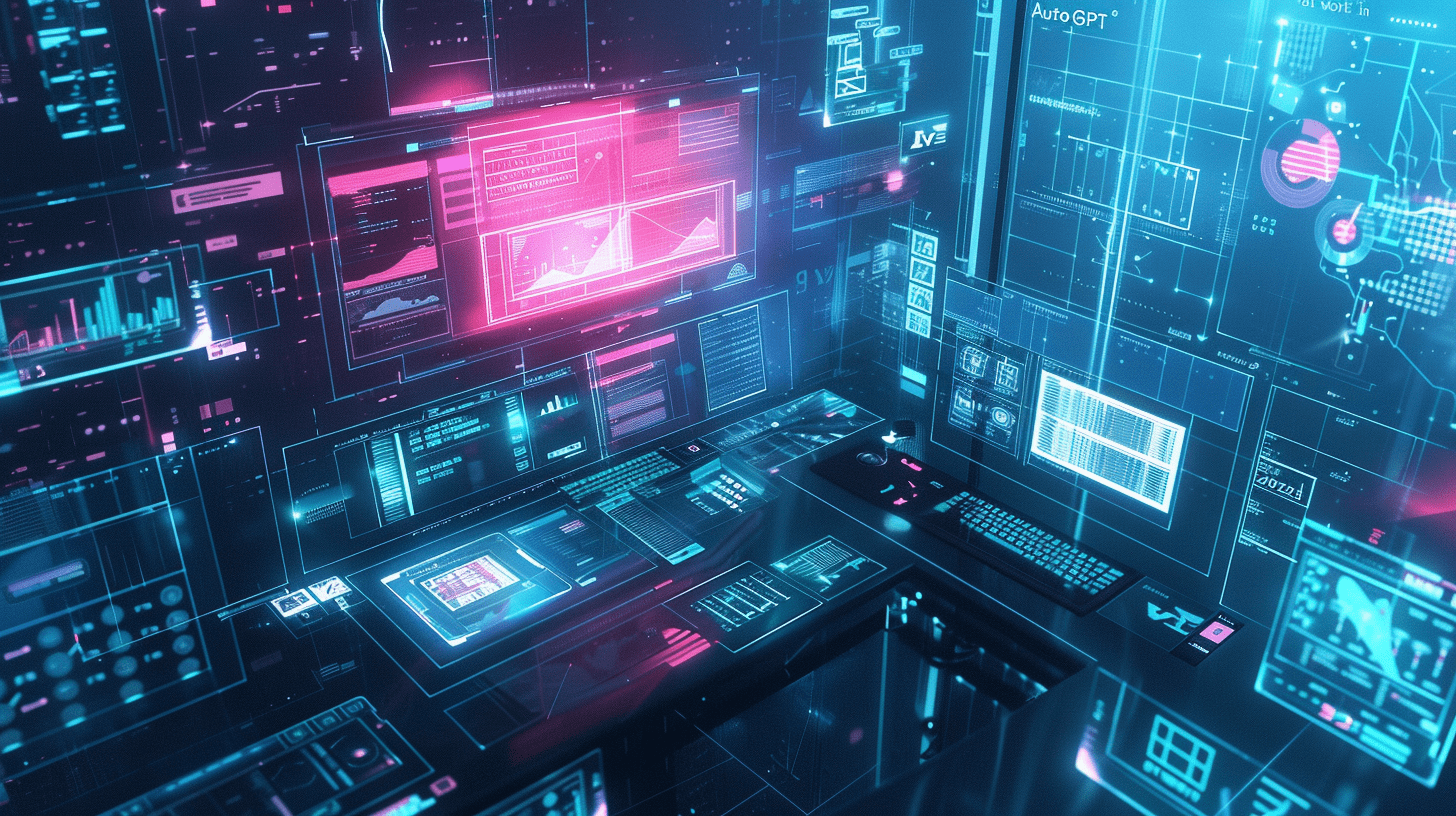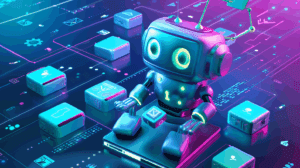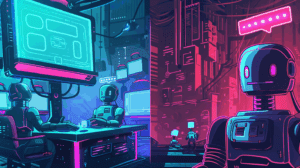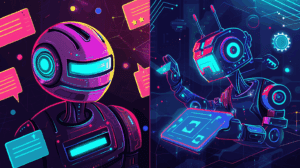The Evolution of AutoGPT in 2025
The evolution of AutoGPT is marked by significant advancements that set it apart in the AI landscape of 2025. One of the defining features is its enhanced autonomy, allowing it to execute tasks with less human oversight, made possible through improved algorithms and learning frameworks. Notably, AutoGPT incorporates principles from agentic AI, moving towards a model where AI can make decisions and take actions independently within specified parameters, thus optimizing workflows without constant input from users [Source: Forbes].
The driving force behind AutoGPT’s development includes escalating demand for efficient operations across various sectors, propelled by the surge in online business and digital transactions. As companies expand, they rely increasingly on AI agents like AutoGPT to manage complex operations, ensuring seamless customer experiences and better scalability [Source: FinTech Futures].
Compared to previous iterations, AutoGPT offers remarkable capabilities in areas like natural language understanding and context awareness. This enables it to handle a wider range of tasks—anything from managing customer relations to automating content generation—while learning from user interactions to enhance performance further [Source: Robotics and Automation News]. As we look to 2025, the evolution of AutoGPT signals a transformative leap in how AI can be integrated into both personal and business workflows, marking a pivotal moment in artificial intelligence development.
AutoGPT v3: Features Enhancing User Experience
AutoGPT v3 introduces a suite of standout features that significantly enhance user experience through improved creativity, contextual understanding, and customization options.
One of the most notable advancements is its enhanced creativity capabilities. This version employs innovative algorithms that allow it to generate more diverse and imaginative responses, making it an invaluable tool for brainstorming and content creation. Users have reported that AutoGPT can inspire novel ideas and solutions that surpass typical chatbot outputs, fostering a more engaging interaction with AI [Source: TechXplore].
In terms of contextual understanding, AutoGPT v3 boasts significant improvements. It can better retain context over longer conversations and is adept at interpreting user intent, thus providing responses that are not only relevant but also tailored to the nuances of the dialogue. This heightened contextual sensitivity allows for more natural conversations, akin to interacting with a human [Source: Tom’s Guide].
Furthermore, user customization options have been significantly broadened. Users can now fine-tune the AI’s personality and response style, adapting it to individual preferences and specific use cases. This level of personalization ensures that interactions are not only efficient but also aligned with the user’s unique communication style, making AutoGPT a more effective and pleasant digital assistant [Source: Lenovo News].
Incorporating these advanced features, AutoGPT v3 is set to redefine the interaction landscape between users and AI, introducing not just functionality but also a more intuitive and enjoyable user experience.
Revolutionizing Productivity with AutoGPT v3
AutoGPT v3 is revolutionizing productivity across diverse fields by integrating seamlessly with various platforms and applications. In content creation, AutoGPT enhances workflows by automating tedious tasks, allowing creators to focus on crafting engaging narratives and innovative ideas. For instance, tools powered by AutoGPT can assist in generating articles, creating social media posts, and even developing marketing materials, all while adapting to specific brand voices and requirements. This capability enables teams to produce high-quality content more efficiently, driving results in campaigns and outreach efforts [Source: Tom’s Guide].
In the realm of coding, AutoGPT streamlines programming by providing real-time assistance and code suggestions, facilitating faster development cycles. This integration allows developers to troubleshoot and write code more effectively, reducing the time spent on coding and increasing overall project velocity. By leveraging AI-powered coding tools like AutoGPT, programmers can access best practices and snippets, enhancing their productivity and collaboration in coding environments [Source: TechCrunch].
Moreover, in customer service, AutoGPT can be integrated with chat applications and customer relationship management (CRM) systems to provide instant responses to customer inquiries. This assures that businesses maintain engagement with customers, improve response times, and enhance overall satisfaction. By utilizing AutoGPT, companies can automate routine interactions, allowing human agents to focus on more complex customer needs [Source: The Drum].
Through these integrations, AutoGPT not only enhances productivity but also streamlines processes across various sectors, marking a significant advancement in how teams collaborate and execute their goals.
Performance Improvements in AutoGPT v3
AutoGPT v3 has significantly improved its performance through various technical advancements. One of the most notable upgrades is its enhanced processing capabilities, allowing for faster data handling and reduced response times. This is primarily due to innovations in its foundational architecture, which integrates advanced machine learning algorithms that improve not only accuracy but also efficiency in producing outputs.
The system’s response speed has also benefited from updates in data analysis layers and cloud-based infrastructure, which facilitate quicker access to vast datasets. This technology enables AutoGPT v3 to process information and generate responses in near real-time, enhancing user experience and making interactions more fluid. These improvements are critical, especially for applications requiring immediate feedback, such as customer service and interactive content generation.
However, despite these advancements, users may still face certain challenges. One prominent issue revolves around managing the system’s increased complexity. As AutoGPT v3 incorporates more sophisticated features, the potential for encountering bugs or errors grows, which can affect reliability. Additionally, the introduction of advanced AI capabilities raises cybersecurity concerns, as systems become more entwined with user data and external networks. Regulatory measures may also lag behind technological innovation, leaving users exposed to risks in data privacy and operational integrity [Source: AZO Mining].
In conclusion, while AutoGPT v3 offers impressive enhancements in processing and response times, challenges such as complexity management and cybersecurity risks remain crucial considerations for users navigating this advanced AI landscape.
The Future Trajectory of AutoGPT
AutoGPT’s trajectory is poised for significant evolution, particularly with the anticipated release of AutoGPT v3. This iteration is expected to enhance user experiences by delivering unprecedented levels of personalization and interaction. Insights indicate that AutoGPT v3 will likely incorporate advanced machine learning algorithms that allow for seamless integration with varying user needs, enhancing collaboration between humans and AI systems in hybrid work environments [Source: South Florida Reporter].
The future of AutoGPT also holds implications for broader AI and machine learning trends, notably in autonomous systems. As businesses adopt AI-driven decision-making processes, the demand for sophisticated virtual agents that can intelligently respond to complex queries will escalate. Innovations in AI, such as those being explored for 5G networks, are setting the stage for applications that can vastly improve operational efficiency [Source: Light Reading].
Moreover, while generative AI technologies, including AutoGPT, continue to garner reliance, it remains crucial for developers to address reliability issues. As past experiences have shown with AI chatbots, inconsistencies can lead to user dependency without guaranteed results, emphasizing the necessity for robust frameworks that ensure dependability in AI outputs [Source: The Atlantic].
Overall, AutoGPT’s future developments will not only redefine user interactions but also contribute fundamentally to the emerging landscape of AI and machine learning, paving the way for intelligent agents that truly enhance productivity and innovation.
Sources
- AZO Mining – AutoGPT Performance Improvements
- FinTech Futures – The Driving Force Behind AutoGPT
- Forbes – The Evolution of AutoGPT in 2025
- Light Reading – The Future of Autonomous Systems
- Robotics and Automation News – Advancements in AutoGPT Performance
- South Florida Reporter – AI Trends and the Future Workforce
- TechCrunch – AutoGPT in Coding Environments
- TechXplore – Enhancing Creativity with AutoGPT
- Lenovo News – Customization Options in AutoGPT v3
- The Atlantic – Addressing Reliability in Generative AI
- The Drum – AutoGPT in Customer Service
- Tom’s Guide – Contextual Understanding in AutoGPT v3
- Tom’s Guide – Productivity Revolution with AutoGPT
“`



